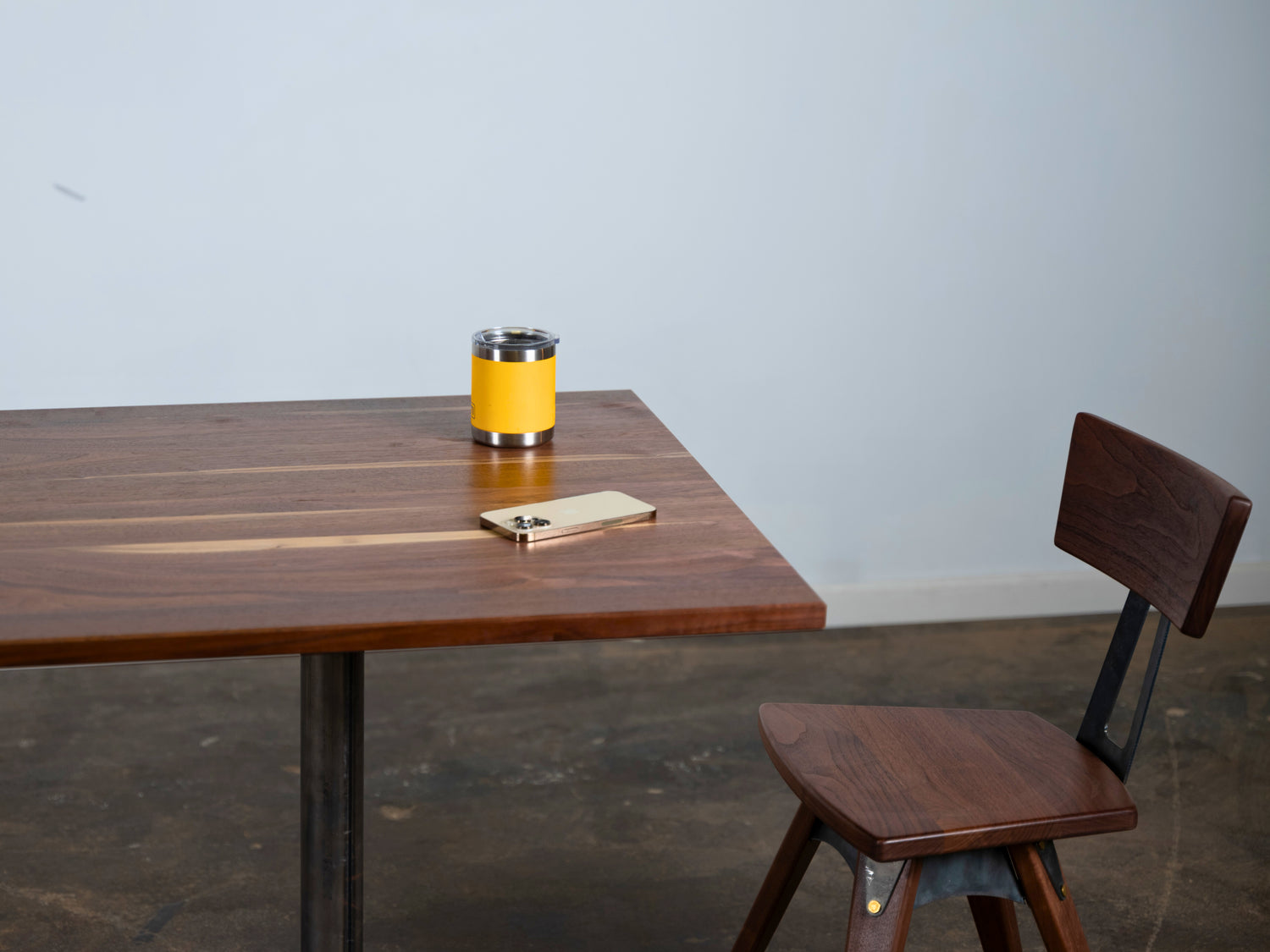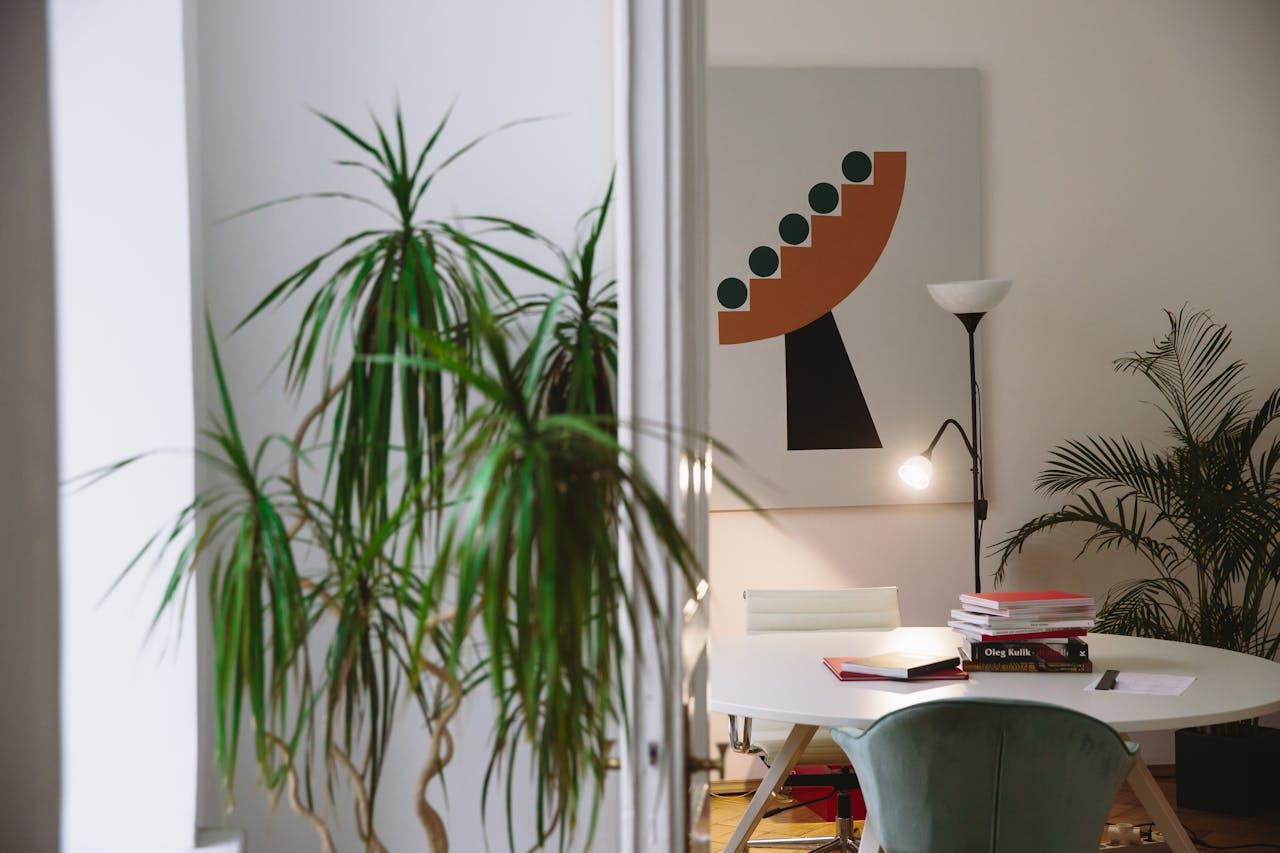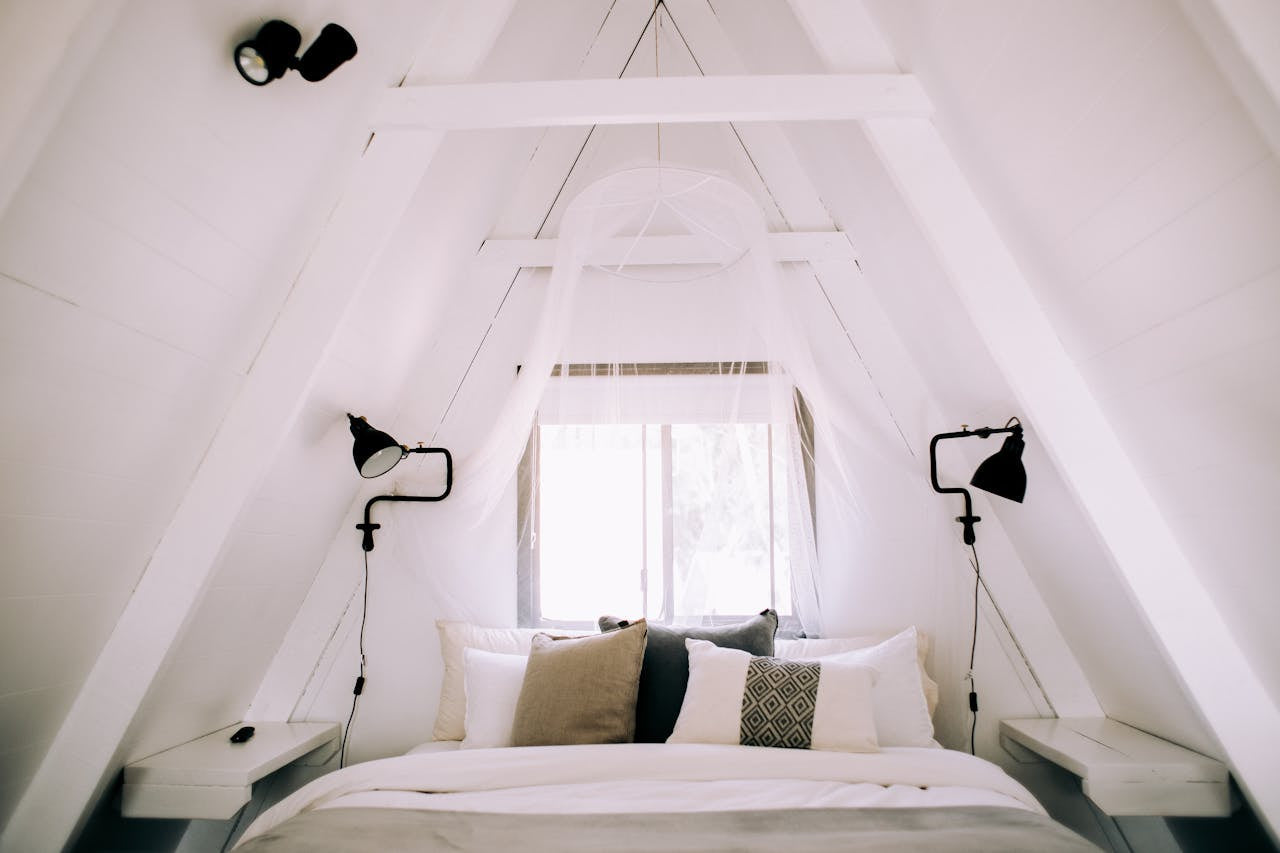Warmer and more welcoming spaces are trending this year. There’s a shift towards colors that are richer and evoke cozy elegance—a slight contrast from the whites, cool grays, and light woods that have dominated interior trends in recent years.
Walnut, as a darker type of wood compared to maple, cherry, and oak, perfectly rides this wave. Aside from its deep brown color and warm undertones, walnut has other features to offer. Here's why this beautiful wood is a good choice of material for furniture:
1. Rich and Stunning Color
Walnut boasts a rich, warm color with subtle variations in the grain. Its natural beauty adds depth and dimension to any room, especially if the walls are earthy neutral shades of green and other lighter colors. In darker interiors, walnut makes the space moody with a touch of mystery, which is ideal for dark academia and modern Gothic-inspired spaces.
The unique grain pattern of natural walnut wood makes a furniture piece built from this material a true standout. Materials manufactured for mass production like veneer can’t quite achieve this effect, even when it imitates the rich and stunning color of walnut.
2. Durability You Can Trust
Walnut is a hardwood, renowned for its strength and stability, placing it among the top contenders for furniture crafting. A material of this caliber results in furniture that can withstand everyday wear and tear for generations. While not invincible, walnut's inherent durability ensures your furniture pieces can become cherished family heirlooms. And with proper care, it can age gracefully over time.
- Read more: How to Clean Wood Furniture
- Best product for wood furniture: Organic Wood Finish by T.Y. Fine Furniture
3. Versatile Enough for Any Style
The warm tones of natural walnut wood complement a wide range of design aesthetics. For modern minimalist interiors, walnut adds a touch of organic homeliness, preventing the space from looking too sterile. In traditional homes, walnut furniture can also fit right in, with its naturally sophisticated and elegant color.
Walnut wood, as a material of choice, can truly transcend trends. Choose a walnut piece with a simple design so that it’s unlikely to go out of style, saving you from the need to replace it whenever you feel like redecorating your space.
Explore our Apollo Collection for beautiful walnut furniture.
4. Sustainable, Long-Term Investment
The inherent strength and stability of walnut wood means the furniture you buy is built to last. This minimizes the need to replace furniture more frequently, which cuts down on waste and the environmental impact of manufacturing new pieces.
The resell value of natural walnut furniture can also be considerable, especially when maintained in good condition. It simply needs slight refinishing and repairing to have its lifespan extended. But for a material as valuable as walnut, you might want to simply keep it in the family for future generations.
It’s important to note though that when it comes to the sustainability of furniture, it’s very important to consider the source of the materials. For starters, it’s better to opt for local walnut rather than imported walnut wood. Second, go for furniture makers that get their materials from managed forests–responsible forestry practices help ensure the forest has time to replenish.
Note: Fortunately, walnut trees grow naturally in the US. Black walnut trees, specifically, are native to North America and can be found in various areas from southern Ontario to central Texas.
Read more: What is a Sustainable Managed Forest and How Does it Work?
Natural Walnut for Furniture, the Pros and Cons
Natural walnut is undeniably a popular choice of material as it is beautiful and durable. But like any other type of wood, it has its pros and cons:
Pros of Walnut Wood
- Stunning Aesthetics: Warm brown color, rich grain patterns, and a timeless look that complements various design styles
- Durability: A hardwood known for its strength and durability that helps ensure the piece of furniture lasts for generations
- Versatility: Works well in modern and traditional settings with its naturally warm and inviting color
- Return of Investment: Naturally durable to last for years, minimizing the need for constant repair and replacement, with a potential for a high resell value when kept in good condition
Cons of Walnut Wood
- Cost: Walnut is a premium hardwood, so furniture made from it can be more expensive than other types of wood, even more for mass-produced options like MDF and veneer
- Fades to Sunlight: Constant exposure to direct sunlight can cause walnut furniture to fade over time. Strategic furniture placement is recommended.
- Susceptible to Scratch and Dents: Like most types of wood, walnut can be scratched or dented if not cared for properly.
- Requires Maintenance: Regular dusting and occasional oiling and waxing are necessary to maintain a walnut piece's natural beauty.
Natural walnut is known for its beauty, durability, and elegance, making it an excellent choice for furniture. However, it's important to consider the cost and maintenance before making a decision. If you appreciate darker wood with a unique character and are willing to invest, walnut furniture can be a stunning and long-lasting addition to your home.



Leave a comment
This site is protected by hCaptcha and the hCaptcha Privacy Policy and Terms of Service apply.